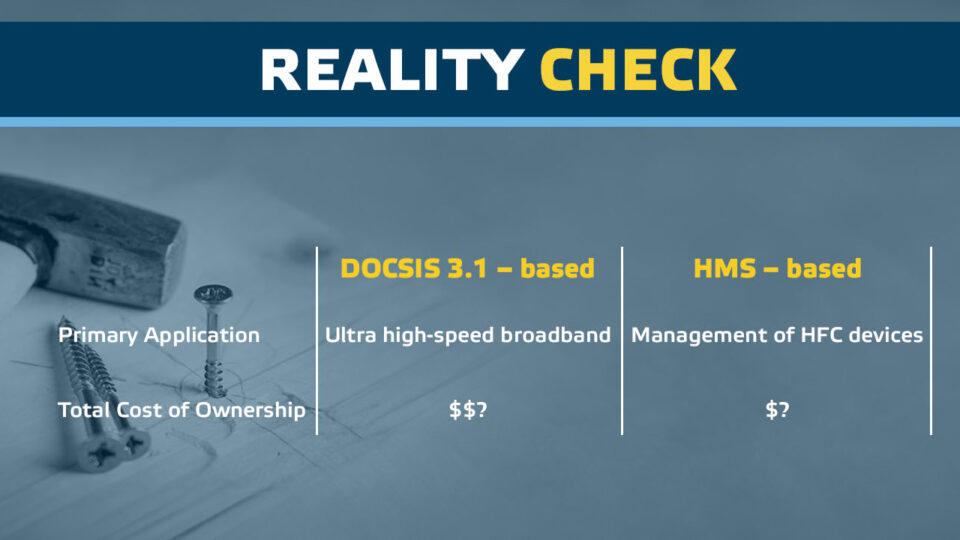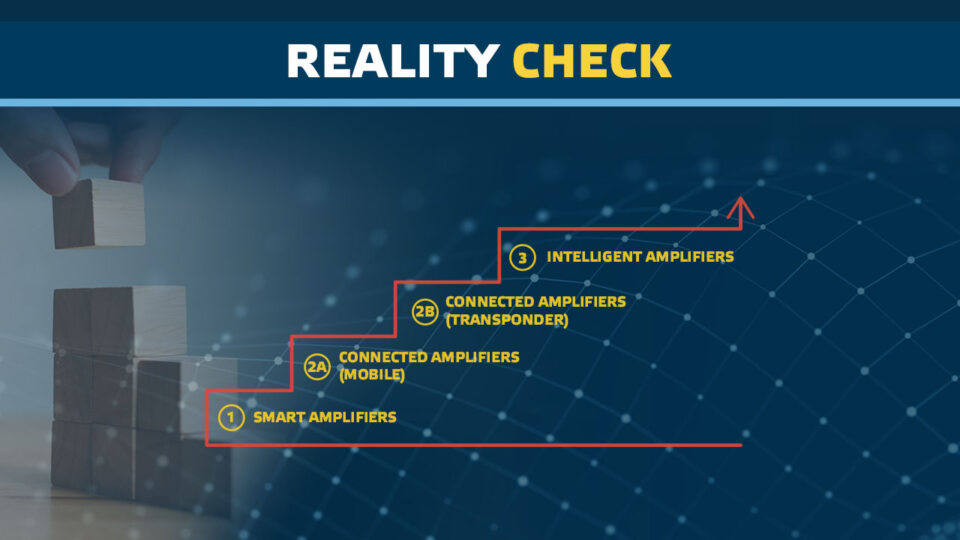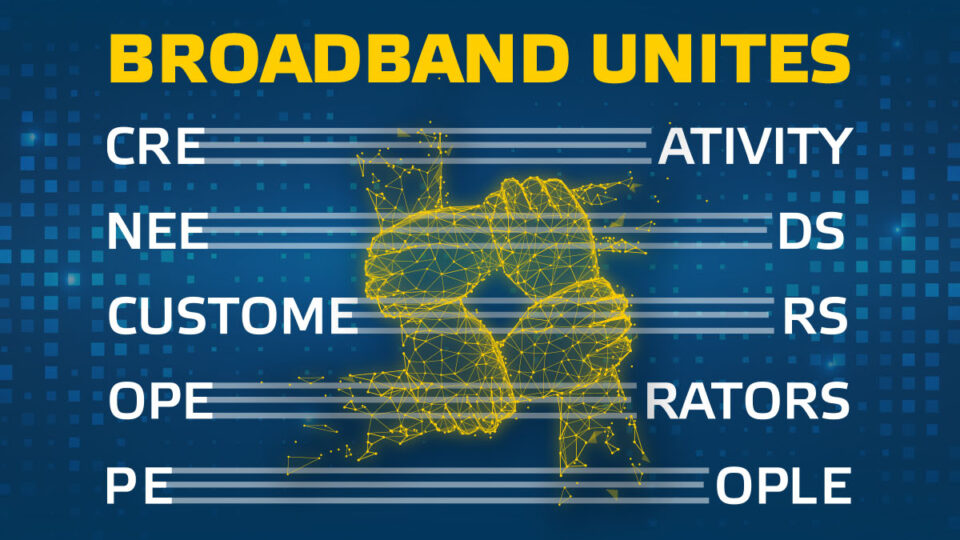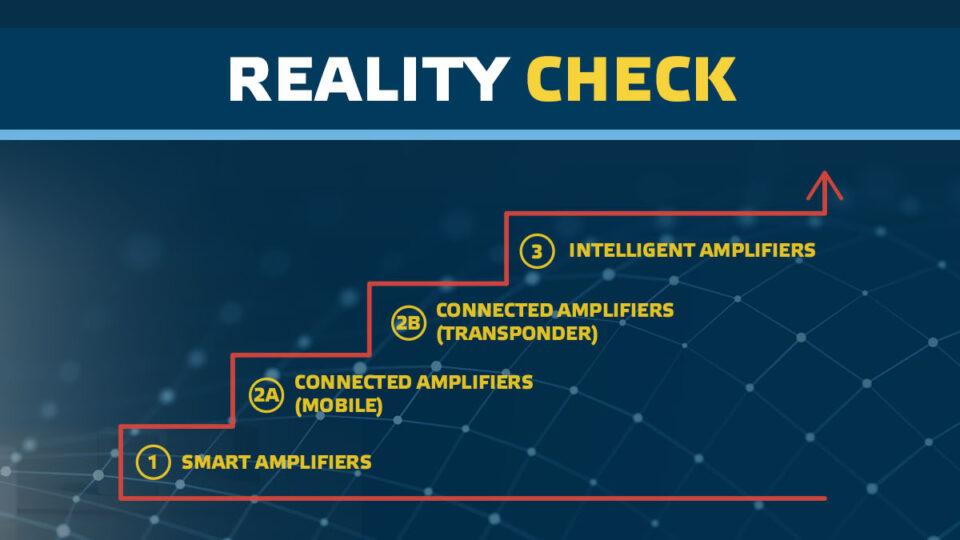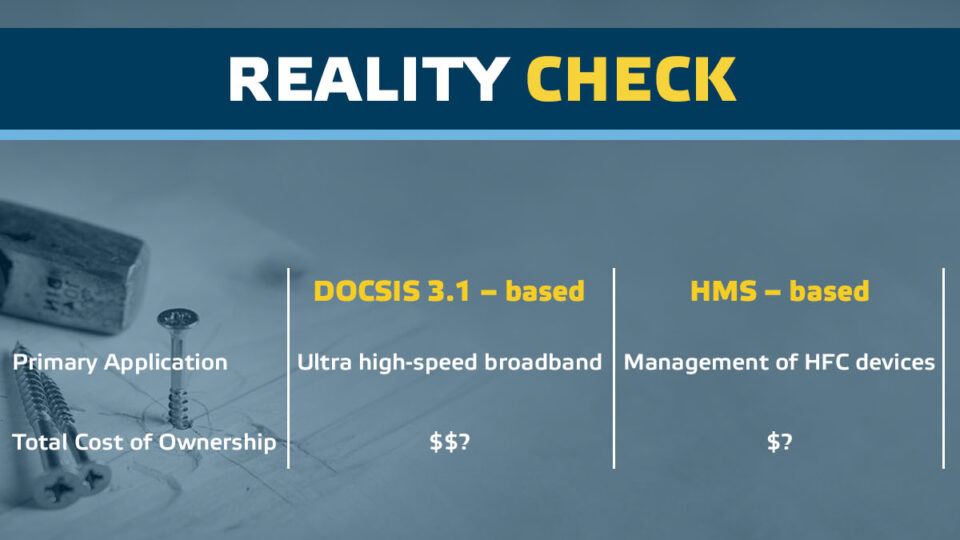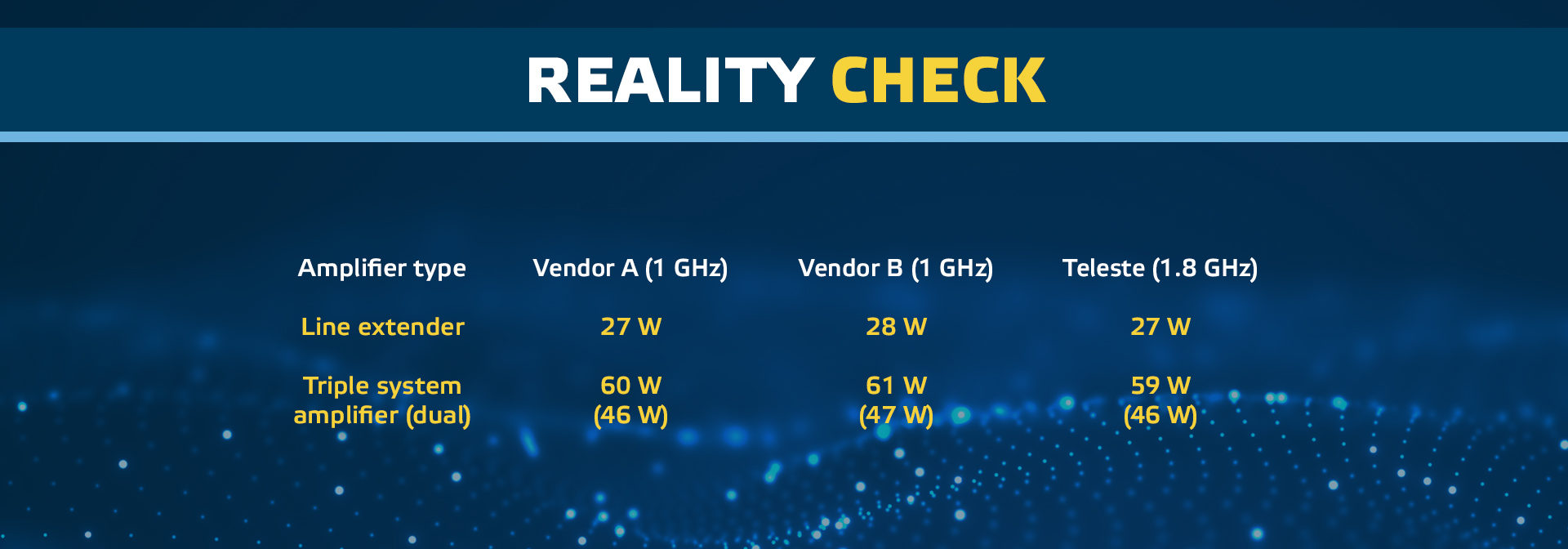
Powering of 1.8 GHz amplifiers: a reality check
In this article, we strive for facts for cable operators who might have heard anecdotal statements regarding the power consumption of 1.8 GHz amplifiers.
We have measured several 1.0 GHz and 1.2 GHz legacy amplifiers to compare them to our new 1.8 GHz amplifiers. From the measured amplifiers, we have tabulated two line extenders and two system amplifiers that represent existing legacy amplifiers very well. The power consumption of 1.0 GHz and 1.2 GHz amplifier generations is on par with the new 1.8 GHz amplifiers, at least when the 1.8 GHz amplifier is run at full power and considering only active power. This is shown in Table 1.
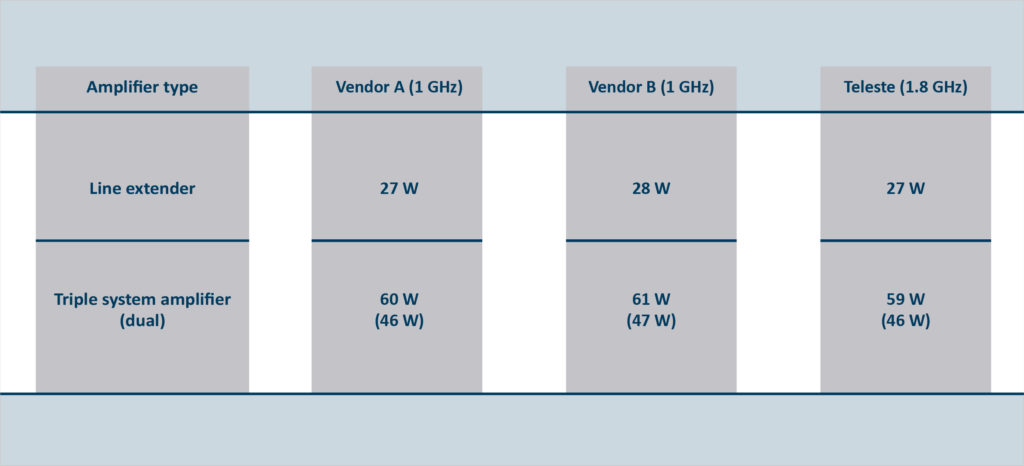
However, the results may be misleading as the table shows useful power (a.k.a. active power [W]) and not total power (a.k.a. apparent power [VA]). Total power is interesting because electricity bills are based on it and network power supplies must feed that in the network. We need Table 2 to see the difference. It shows comparison of two line extenders, where the legacy amplifier (Vendor A) does not include the power factor correction (PFC) function while the Teleste 1.8 GHz amplifier has native PFC.
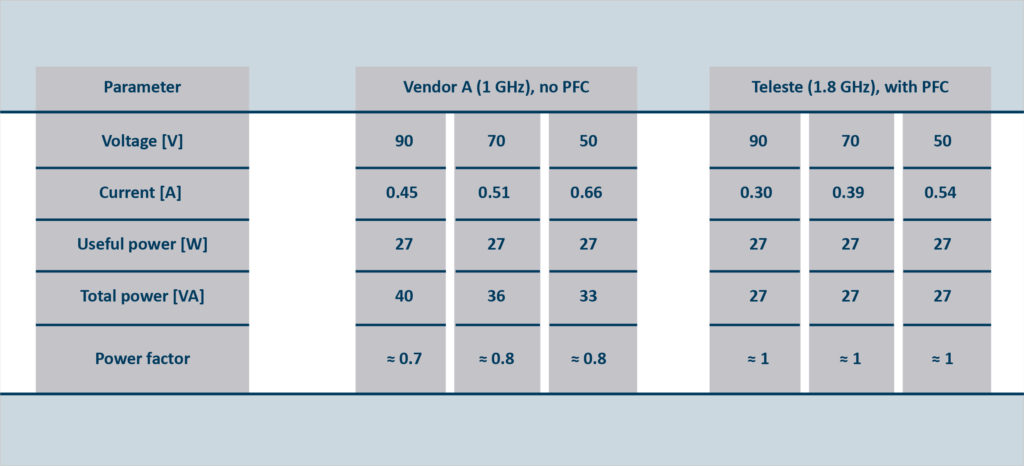
The difference between the total power and the useful power is called reactive power. The reactive power provides a magnetized field required by inductive loads. The ratio between the useful power and the total power is called the power factor. When the power factor is one, the current draw from a network power supply is ideal. When the power factor is 0.8, amplifiers draw more current than they really use. But is that higher current a real or imaginary problem? The problem is real, as the higher current requires more from network power supplies and causes higher losses in coaxial cables and other loads having resistance, such as passives. Figures 1 and 2 illustrate what this means in practice. Figure 1 shows three cascaded 1.0 GHz system amplifiers without PFC. Amplifiers use 60 W, but their total power is 75 VA per amplifier.
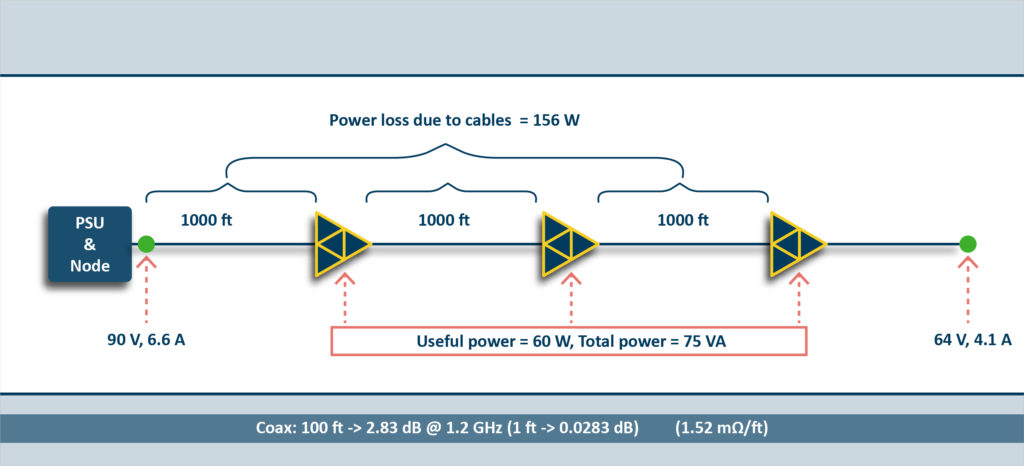
Figure 2 shows three cascaded 1.8 GHz system amplifiers with PFC. While useful power of amplifiers in both figures is equal, amplifiers without PFC draw higher current from the network power supply. This higher current leads to higher power loss in the coaxial cables. The 30 W difference is real and the existing cable networks equipped with legacy amplifiers (no PFC) are already today tolerating that. So, the good news: when existing cable networks are upgraded, new 1.8 GHz amplifiers (with PFC) do not cause investment waves due to new network power supplies. Instead, the saved power can feed additional booster amplifiers when the distance between high gain amplifier stations is especially long.
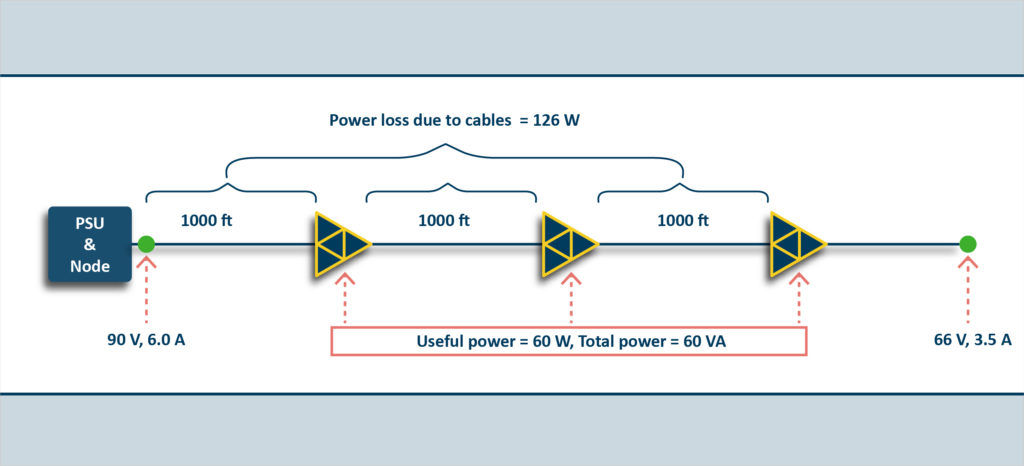
After discussing the power losses in coaxial cables and the benefits of PFC, some sharp-eyed readers may ask, can we add up the savings in Table 3? Yes, but only to a certain extent. However, it is not possible to compare 381 W (225 VA + 156 W) to 306 W (180 VA + 126 W) directly and say that PFC saves 75 W because of two main reasons that are beyond the scope of this article. First, in real networks the network itself, even without PFC amplifiers, acts as a poor PFC due to the elements it contains. Secondly, without going to the cosine ø, summing useful power (W) and total power (VA) defies the laws of physics.
The math could be done for both amplifier cascades but generalizing the calculated results to cover other cases would lead to the wrong conclusions. Instead, some rules of thumb based on real measurements can be offered. The benefit of having PFC in amplifiers is from 5% up to 20% lower power consumption. The length of cables, number of amplifiers, quality of network power supplies, and whether we discuss useful or total power, impact its magnitude. While the cable industry has discussed power consumption since the beginning, we would like to put VAs up on the pedestal when 1.8 GHz network upgrades are taking place. Pure watts may lead to wrong conclusions.
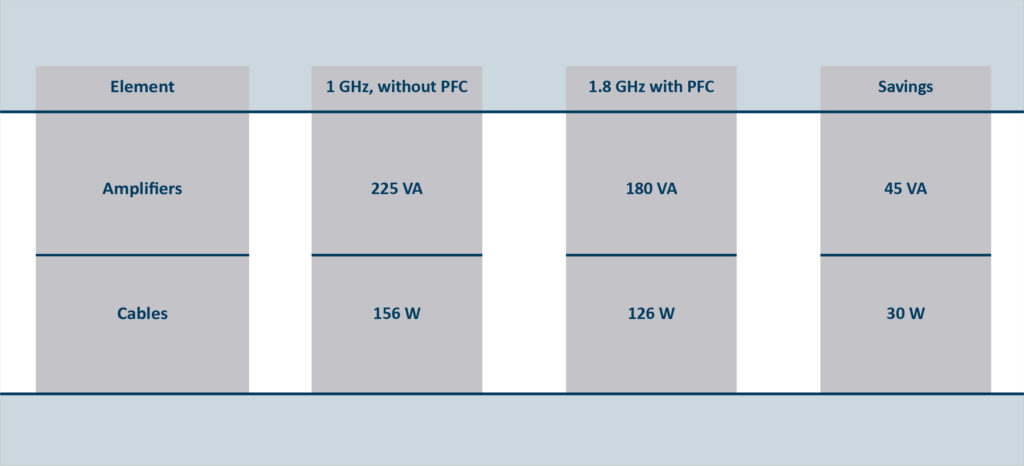
Discover more reality checks!
